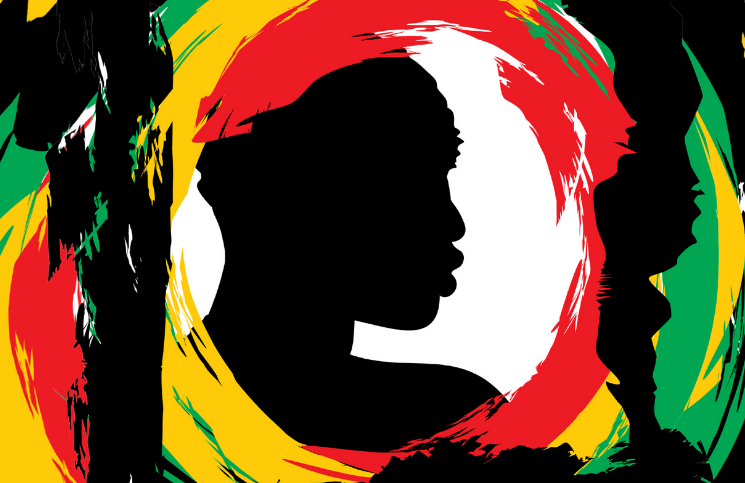by Cathie Maglio
As a math teacher, I am always looking for role models for my students, especially role models of different backgrounds. I’m taking advantage of Black History month to write about some Black role models who have contributed to my favorite field, mathematics.
Benjamin Banneker (1731-1806)
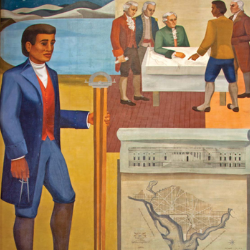
Benjamin Banneker lived in Baltimore County, Maryland. He is best known for building America’s first clock. Made of wood, it struck the hour and kept precise time for decades. He used his knowledge of trigonometry and astronomy to predict a solar eclipse for 1789. His prediction was correct: there was a solar eclipse on March 4, 1789. The Benjamin Banneker Public Charter School in Cambridge is named for him.
Image attribute: Benjamin Banneker depicted on a 1943 mural by Maxime Seel binder in the Recorder of Deeds Building in Washington, D.C. (2010) [Library of Congress] (Creative Commons, Public Domain, Wikipedia)
Elbert Frank Cox (1895-1969)
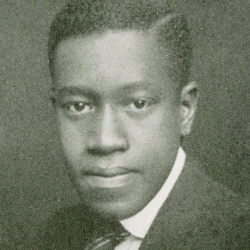 Elbert Frank Cox was the first Black person to receive a PhD in mathematics in the United States and in the world. He was awarded the degree in 1925 by Cornell University, after having earned his A.B. from Indiana University in 1917. He then taught math for 40 years at Howard University and West Virginia State College. The Cox-Talbot Address was created by the National Association of Mathematicians in his honor. It is delivered annually at their national meeting. In 1975 Howard University established a scholarship in his name to help Black students pursue graduate studies in mathematics.
Elbert Frank Cox was the first Black person to receive a PhD in mathematics in the United States and in the world. He was awarded the degree in 1925 by Cornell University, after having earned his A.B. from Indiana University in 1917. He then taught math for 40 years at Howard University and West Virginia State College. The Cox-Talbot Address was created by the National Association of Mathematicians in his honor. It is delivered annually at their national meeting. In 1975 Howard University established a scholarship in his name to help Black students pursue graduate studies in mathematics.
Image attribute: Elbert Cox, Class of 1917, Indiana University – Unknown author – Indiana University 1917 Yearbook http://webapp1.dlib.indiana.edu/archivesphotos/ (Creative Commons, Public Domain, Wikipedia)
John Urschel (b. 1991)
 If you are a football fan, you may have seen John Urschel play for Penn State or the Baltimore Ravens. You may not know that he earned bachelor’s and master’s degrees in mathematics from Penn State and retired from football at 26 to pursue a PhD in mathematics at MIT.
If you are a football fan, you may have seen John Urschel play for Penn State or the Baltimore Ravens. You may not know that he earned bachelor’s and master’s degrees in mathematics from Penn State and retired from football at 26 to pursue a PhD in mathematics at MIT.
Three Black women mathematicians worked for NASA and made significant contributions to the space program.
Image attribute: John Urschel – Date: 12 September 2015 | Source: Own work | Author: Jeffrey Beall (Creative Commons, Public Domain, Wikipedia)
Annie Easley (1933-2011)
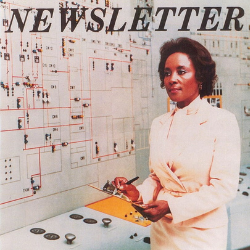 Annie Easley was known as a “human computer.” A famous NASA computer and rocket scientist, she was a member of the team that developed the Centaur rocket in the early 1960s which opened the door for other NASA missions. Her work at NASA broke down barriers for both women and Black Americans in science. She earned her bachelor’s degree from Cleveland State University while working full time at NASA.
Annie Easley was known as a “human computer.” A famous NASA computer and rocket scientist, she was a member of the team that developed the Centaur rocket in the early 1960s which opened the door for other NASA missions. Her work at NASA broke down barriers for both women and Black Americans in science. She earned her bachelor’s degree from Cleveland State University while working full time at NASA.
Image attribute: Front cover of the Science and Engineering Newsletter featuring Annie Easley at Lewis Research Center. (NASA item #C-82-4215) (Creative Commons, Public Domain, Wikipedia)
Katherine Johnson (1918-2020)
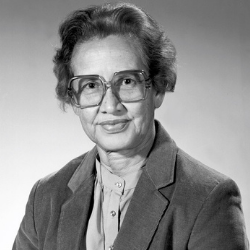 Katherine Johnson was instrumental in John Glenn’s orbit around the moon in 1962. She did the orbital entry and launch window calculations. She and other Black women at NASA had to fight segregation and prejudice to be recognized for their mathematical ability. She was able to master complex manual calculations and pioneered using computer programming for more complex calculations. In the end, she and her colleagues were able to end segregation at NASA and finally received the accolades they deserved. Katherine Johnson was awarded the Presidential Medal of Freedom by President Barak Obama in 2015. Her story is told in the movie “Hidden Figures.” If you have not seen it, it is worth watching.
Katherine Johnson was instrumental in John Glenn’s orbit around the moon in 1962. She did the orbital entry and launch window calculations. She and other Black women at NASA had to fight segregation and prejudice to be recognized for their mathematical ability. She was able to master complex manual calculations and pioneered using computer programming for more complex calculations. In the end, she and her colleagues were able to end segregation at NASA and finally received the accolades they deserved. Katherine Johnson was awarded the Presidential Medal of Freedom by President Barak Obama in 2015. Her story is told in the movie “Hidden Figures.” If you have not seen it, it is worth watching.
Just last week, the spacecraft manufacturer Northrup Grumman announced that their NG-15 Cygnus spacecraft would be named the S.S Katherine Johnson in honor of her contributions to spaceflight. This spacecraft will be launched on February 20 heading to the International Space Station.
Katherine Johnson held a B.S. in mathematics and French from West Virginia State College.
Image attribute: Katherine Johnson, also Katherine Coleman Goble Johnson, 1983; see NASA bio at https://crgis.ndc.nasa.gov/historic/Katherine_Johnson (Creative Commons, Public Domain, Wikipedia)
Mae Carol Jemison (b. 1956)
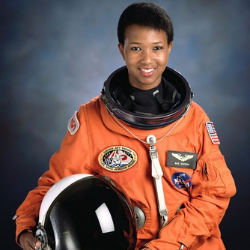 Mae Carol Jemison was the first Black woman astronaut. She visited outer space aboard NASA’s Space Shuttle Endeavour in 1992. Before becoming an astronaut, she was a physician and served in the Peace Corps. She holds bachelor’s degrees in chemical engineering and Afro-American Studies from Stanford and an M.D. degree from Cornell. She continues to be a role model by encouraging children to pursue careers in STEM.
Mae Carol Jemison was the first Black woman astronaut. She visited outer space aboard NASA’s Space Shuttle Endeavour in 1992. Before becoming an astronaut, she was a physician and served in the Peace Corps. She holds bachelor’s degrees in chemical engineering and Afro-American Studies from Stanford and an M.D. degree from Cornell. She continues to be a role model by encouraging children to pursue careers in STEM.
Image attribute: Mae Carol Jemison – NASA Image and Video Library (file) (Creative Commons, Public Domain, Wikipedia)
Lonnie Johnson (b. 1949)
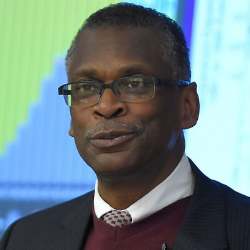 Dr. Lonnie Johnson is the inventor of the Super Soaker water gun. The famous inventor, mathematician and engineer invented the device in 1990 while working for the U.S. Air Force. He also invented the Nerf Gun. While serving as an engineer in the U.S. Air Force, he worked on the development of the Stealth Bomber. He then spent 12 years at NASA’s Jet Propulsion Laboratory. He holds more than 80 patents with 20 more pending. He earned bachelor’s and master’s degrees from Tuskegee University.
Dr. Lonnie Johnson is the inventor of the Super Soaker water gun. The famous inventor, mathematician and engineer invented the device in 1990 while working for the U.S. Air Force. He also invented the Nerf Gun. While serving as an engineer in the U.S. Air Force, he worked on the development of the Stealth Bomber. He then spent 12 years at NASA’s Jet Propulsion Laboratory. He holds more than 80 patents with 20 more pending. He earned bachelor’s and master’s degrees from Tuskegee University.
Image attribute: Dr. Lonnie Johnson – 2016 (U.S. Navy photo by John F. Williams/Released), Office of Naval Research (Creative Commons, Public Domain, Wikipedia)
Valerie Thomas (b. 1943)
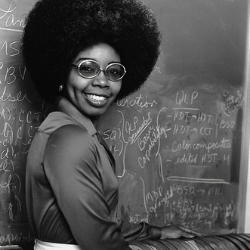 We would not have 3-D television, video games and movies if it were not for Valerie Thomas, the inventor of the Illusion Transmitter. This technology enabled all these 3-D formats. She received a patent in 1980. She also worked for NASA developing real-time data systems and served on the team that developed the Landsat technology that supported the first satellite to transmit images from outer space. She earned her bachelor’s degree in physics from Morgan State University where she was one of only two female physics majors.
We would not have 3-D television, video games and movies if it were not for Valerie Thomas, the inventor of the Illusion Transmitter. This technology enabled all these 3-D formats. She received a patent in 1980. She also worked for NASA developing real-time data systems and served on the team that developed the Landsat technology that supported the first satellite to transmit images from outer space. She earned her bachelor’s degree in physics from Morgan State University where she was one of only two female physics majors.
These are just a few of the great Black scientists and mathematicians in history. There are many others whose names we may never know who have done and are doing great things in math and other STEM fields. I’ll leave it to the next researcher to expand the list. The more we know about the backgrounds and achievements of people like these, the more we can encourage our students to follow in their footsteps.
Image attribute: Dr. Valerie Thomas – NASA file, restored by Adam Cuerden https://landsat.gsfc.nasa.gov/ (Creative Commons, Public Domain, Wikipedia)
Cathie Maglio is a veteran math teacher and a Learning Specialist with JFYNetWorks.
HOW ARE WE DOING? In our pursuit to serve up content that matters to you, we ask that you take a couple of minutes to let us know how we’re doing? Please click here to be navigated to our JFYNet Satisfaction Survey. Thank you!

